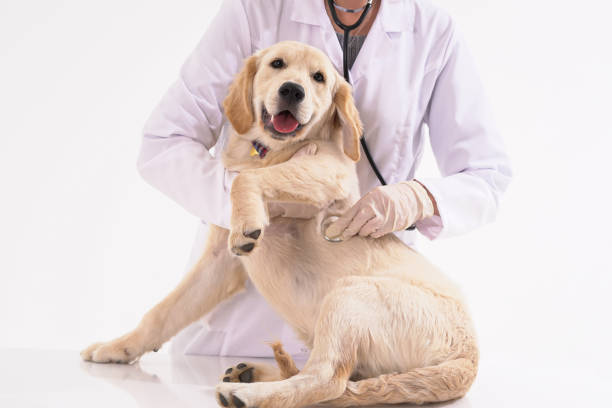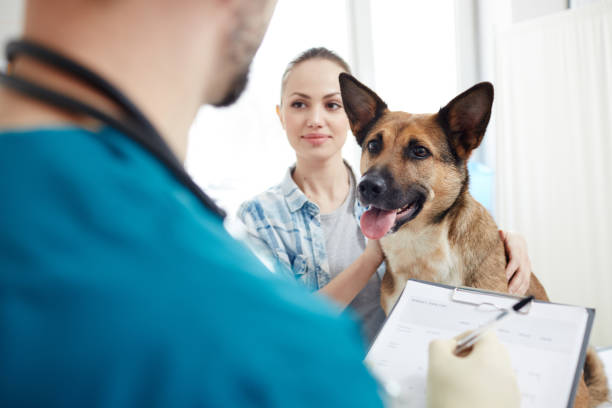2022-10-10
As you may already know service dogs are not just regular pets, but dogs, who have gone through basic obedience training and specific service dog training, depending on what type of service dog tasks they will perform. Training a service dog is a long process, we could even say that it is a life-long process, that requires a lot of time, effort, patience and of course-money. When talking about their service dogs, people usually refer to them as family members (which we absolutely agree with) that are of utmost importance for their physical and/or mental health. However, service dogs can also be considered a long-term investment.

We can definitely say: “Yes”. People engaged in raising and/or training service animals expect a lot of money to be spent during the process i.e. for high quality food, for veterinarian checks, vaccinations, parasite control, any injures that may occur, training gear and different types of toys for physical and mental stimulation...etc. When the training process begins, we need to consider the time needed to properly train a service dog as well as the skills and knowledge required for that. As you can see a service dog is a serious investment, which explains why the costs for a trained service dog received from a for-profit organization can reach up to $30 000. Let’s not forget, that despite their essential role as medical equipment, service animals are still dogs, who can get sick or injured and need proper care and much love. The absence of the service animal can have a very negative impact on his/her owner’s life as it is associated with lack of physical and/or emotional support. Without having their service dogs by their sides, many people with disabilities find it difficult to cope with the daily challenges, engage in social activities or regain their confidence.
In general, this is a health insurance policy that covers the costs for medical expenses related to your pet. Most insurance plans are usually based on the same principle, namely-you pay the medical bills, and then you contact the insurance company, and claim reimbursement. In other words, insurance plans are typically reimbursement-based. However, in the beginning you may need to cover a certain amount of the costs (a few hundred dollars) before the insurance company starts paying. There are also some insurance companies, that cover the vet costs directly, which is very convenient for the insured.
Generally speaking- no, there are no special insurance plans for service dogs only. However, many pet insurance plans can offer extended coverage for medical bills related to your service animal.
Also, some insurance companies have updated some of their plans and started to provide their members with support for their service animals. People who have opted for certain insurance plans and are eligible for a service animal (they are diagnosed with a physical and/or mental health condition, that substantially limits one or more major life activities), will receive benefits. These include an annual allowance of up to several hundreds of dollars that customers can use to cover costs for service dog care.
We would like to note again that this option is not offered by all insurance companies and also a person should meet the criteria for being eligible for a service dog.

Insurance plans offer different coverage levels you can choose from. Typically, these are between 70% and 90% of the costs for medical bills.
There are usually three types of pet insurance, based on the coverage:
1. Complete Coverage (although there are certain exceptions you will read about below);
2. Accidents only;
3. Accidents and Illness.
Full coverage pet insurance plans cover the costs for both accidents and illness including additional conditions and treatment such as allergies, hip dysplasia and other genetic or breed-related conditions, chronic conditions such as Diabetes, and arthritis, cancer, dental problems, orthopedic issues, preventable conditions such as Lyme disease and parasites, surgery, hospitalization, emergency care, complementary care, diagnostic testing, rehabilitation...etc.
Accident and illness plans usually cover the costs for surgery, therapy, lab work, ultrasound, X-rays, including illness both serious ones like cancer and hereditary ones.
The accident-only plans typically cover the costs for bills for accidents where your pet got injured.
Although wellness plans for pets are also designed to cover medical expenses, they are not exactly pet insurance. Wellness plans cover routine care visits at the vet office, i.e. annual examination and vaccinations, dental cleaning, microchipping, neutering/spaying. In other words, wellness plans cover expenses for routine care, you already know that your pet will need. Wellness plans can be added to many pet insurance plans, in order to reduce the cost for preventive care treatment.

Considering the difference between pet insurance and wellness plans, you may already know that expenses for preventive care, such as annual exams, as well as grooming, nail trimming, spaying/neutering, or special food for your pet won’t be covered by pet insurance plans. Also, there are usually veterinarian administrative fees, that pet owners need to pay.
It is very important to note, that most pet insurance plans do not automatically cover pre-existing conditions (health conditions that were present before the insurance plan has been taken). However, there are some insurance companies that offer extended coverage for this type of conditions, in case these are deemed treatable.
Let’s assume that your veterinarian has recommended that your pet should go through a certain type of treatment in order for more serious issues in the future to be prevented. In case you decide to not follow your vet’s advice, your pet insurance plan is likely to stop being valid for any costs that may need to be paid in regard to this health condition. However, this depends on the policy that the particular insurance company runs.

There are typically three types of costs the insured should be aware of when getting an insurance plan for their pet:
1. What the deductible will be?
A deductible is the amount you will need to pay (the part of the bill) before the coverage begins. Based on the plan, a deductible can be paid at once or in rates throughout time.
2. What the maximum coverage on a yearly basis will be?
You will be able to determine the maximum amount that the pet insurance company will pay on an annual basis. The higher the annual maximum coverage is, the higher the monthly premiums will be. However, if your pet needs expensive treatment, you won’t have to worry about the costs for it.
3. What the reimbursement percentage will be?
As mentioned above, reimbursement levels usually vary between 70% and 90%. The higher the reimbursement level is, the higher the monthly premiums will be and vice versa.
Some insurance companies offer discounts that can be applied to various situations, i.e. if you have multiple pets, if you pair pet insurance with another insurance plan with the same company, if you are a veteran (military discount), if you make insurance together with your family members, friends, co-workers...etc. (group discount), if you spay/neuter your pet (pet population control)...etc.
Every pet owner takes the decision to get insurance for their beloved pet or not, based on different factors, such as their pet’s general well-being, age, breed, his/her parents’ health records, their lifestyle and location...and money of course. In any case, we as responsible pet owners should ensure that our beloved pets live in a safe and loving environment.